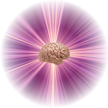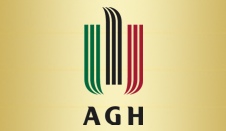ARTIFICIAL INTELLIGENCE
 |
This course is addressed to engineering students who will gain and expand their knowledge about various interesting subjects of artificial intelligence, computational intelligence (soft-computing), associative knowledge engineering, intelligent chatbots, and psychological backgrounds of intelligence modelling. The objective is to give students a comprehensive overview of the topics and various methods of artificial intelligence as well as practical skills in using AI tools. We will talk about backgrounds as well as practical uses of various computational methods that are biologically inspired. We will try to ponder over the main puzzles that constitute our human intelligence and model it using artificial models and computational methods. |
The main questions of this subject are:
- What is intelligence, and where does it come from?
- How are run thinking processes?
- How do we associate and form knowledge in our brains?
- What is knowledge, and how does it come into being?
- What is a neuron, and what are its most important features and functions that provide us with knowledge and intelligence?
- What is information? When and where does it come into being?
- What kinds of intelligence can we distinguish?
- How intelligence can develop?
- What are the main aims of intelligent communication, and how are they related to the needs and the way of talking or conducting negotiations?
- How can we model intelligence in artificial systems, and how can we create artificial intelligence?
You will gain knowledge on the following subjects:
- models of neurons: McCulloch-Pitt’s model of a neuron, non-linear neurons, radial neurons, spiking neurons, and associative neurons (as-neurons);
- types of neural architectures: all-to-all, ontogenic, layers, MLP, RBFN, Kohonen’s SOM, Hopfield’s recurrent networks, associative graphs of adaptive and plastic as-neurons;
- learning rules: Hebb’s rule, associative rule, back propagation algorithm, gradient methods etc.;
- forming of knowledge representation and triggering associations.
You will also get familiar with the following methods of computational intelligence:
- supervised and unsupervised training, and other adaptation methods;
- perceptron training using the Hebb’s rule;
- classification, pattern recognition;
- Back Propagation algorithm for training MLP networks (one of the most popular and fundamental method for adapting artificial neural networks);
- ASSORT - associative multiparametric sort using as-neurons and AGDS structures;
- ANAKG & LANAKG - (linguistic) active neuroassociative knowledge graphs for knowledge modeling in neural associative graphs (artificial associative systems).
Interesting links, extra materials, and descriptions to these topics you can find also in:
|



